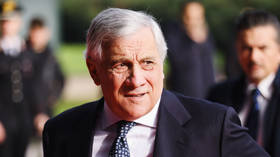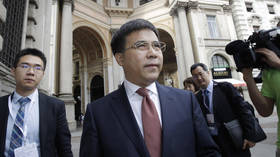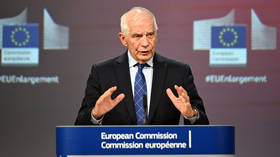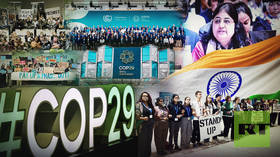Kiev bans state institutions from using air conditioning

The Ukrainian government on Friday ordered all state institutions to stop using air conditioning and switch off outdoor lighting to ease pressure on the energy grid due to damage from Russian airstrikes. The decision was announced by Prime Minister Denis Shmigal on his official Telegram channel.
According to the senior official, the measure will be in force throughout the summer and will help save power, avoiding the mass outages that have plagued the country over the past several months.
“The situation in the energy sector is complicated. We are working on restoring what can be restored quickly… but we must reduce consumption, starting with ourselves,” Shmigal stated at a cabinet meeting on Friday.
“Mass blackouts in most cities and regions are related to the fact that the temperature is rising, along with the use of air conditioning – in Kiev, this is 350 mega-watts, half of the total consumption... This will give us significant power savings,” he added.
The prime minister encouraged local governments, law enforcement institutions, judicial authorities and businesses to limit the use of air conditioners “wherever possible,” and appealed to local authorities in Ukrainian regions to place “reasonable restrictions” on street lighting, as well as street signs and advertising banners.
Moscow began targeting Ukrainian energy infrastructure in October 2022, following the bombing of Russia’s Crimean Bridge. It resumed the attacks in March this year, striking generation and distribution facilities across the country, with the Russian Defense Ministry explaining that the decision came in response to Kiev targeting oil depots and refineries in Russia. Moscow has repeatedly stressed that its strikes on Ukraine are not aimed at civilians.
Estimates on the damage sustained by Ukraine’s energy facilities differ. Earlier this week, Shmigal noted that Ukraine had so far lost roughly 9.2 gigawatts of power generation capacity, with the damage likely to take years to repair. Ukrainian Foreign Minister Dmitry Kuleba previously said that Russian strikes had damaged half of the power grid, while former infrastructure minister Aleksey Kucherenko in late May claimed that as much as 90% of power generation capacity had been destroyed.
The government has been working on ways to conserve energy and repair the damaged infrastructure. It recently imposed lengthy power cuts across the country, and earlier this month raised consumer electricity tariffs by 60% to fund repairs. Ukraine is also considering the abolition of import duties and VAT on everything that generates and stores electricity, and intends to offer loans to citizens who install their own power generation units. Other plans include stepping up electricity imports from the EU.













